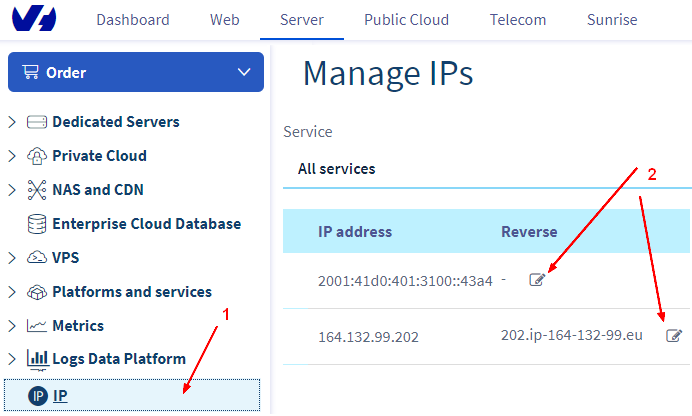DNS - PTR record (Pointer)
About
A PTR record is a DNS record with the type PTR that:
- gives back a domain name from a ip address
- is the result of a reverse lookup
Usage: Authentication
A PTR record is important because it's a part of request authentication on the Internet.
ie when a server gets a request from an IP, it performs:
- first an reverse lookup to determine its host name
- then a forward lookup to validate the host name
If they don't match, the request is classified as bad.
For instance:
- this is the way to validate google bot
Example of Gmail SMTP error message:
The IP address sending this message does 550-5.7.25 not have a PTR record setup,
or the corresponding forward DNS entry 550-5.7.25 does not point to the sending IP.
As a policy, Gmail does not accept 550-5.7.25 messages from IPs with missing PTR records.
Please visit 550-5.7.25
Who can set the PTR record?
Only the owner of the IP can set a reverse record, not the owner of the domain. Therefore if you want to set a PTR record:
- for a server, you need to do it at your server provider
- for your internet connection, you need to ask it to your telecom provider
You Server provider should give you an interface to create it for a host
Example ovh on the cloud planel:
Zone
The reverse DNS database of the Internet is rooted (ie the PTR records are stored) in the .arpa top-level domain.
Reverse Map Name
The name that should be queried to get the PTR record is known as the reverse map name.
Ipv4
For the IPv4 address, a.b.c.d, the reverse map name is d.c.b.a.in-addr.arpa..
Example:
142.175.106.72.in-addr.arpa.
where:
- 142.175.106.72 is the reversed IP
- in-addr.arpa is the namespace (for Ipv4) where the records are stored. ie in the arpa domain
Ipv6
IPv6 PTR records are stored under the IPv6 address, reversed, and converted into four-bit sections (as opposed to 8-bit sections, as in IPv4), plus .ip6.arpa.
